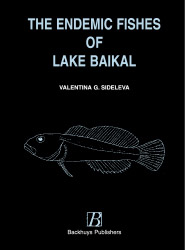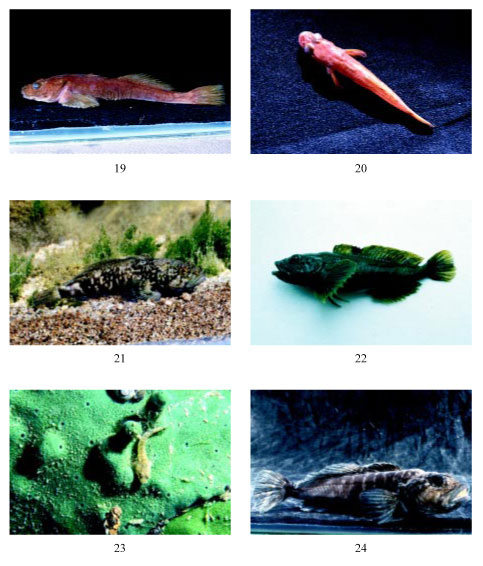

Baikal is unique
among the Great Lakes of the world in that there is fish life from its surface
to a depth of over 1600 meters, its greatest depth. In contrast, the other deep
rift valley lakes in Africa are permanently anoxic below depths of about 100
to a little over 200 meters. The shallow water fishes of Baikal are very similar
to those of surrounding water bodies. What makes Baikal unique is its diverse
assemblage of sculpins (Cottoidei), nearly all of which are in deep water and
endemic. Baikal’s great habitable depth range, combined with its great
age, make it unique natural laboratory for the study of adaptation to deepwater
conditions.
The present ichthyofauna of Lake Baikal includes 61 species and subspecies of
fishes belonging to 32 genera and 15 families. This constitutes about 2.2% of
the total number of animal species in the lake. There are 55 native fishes and
six species have been introduced. One species reported earlier for northern
Baikal, Salvelinus alpinus erythrinus Georgy, is now extinct.
The introduced species include three ostariophysans: two Cyprinidae and one
Siluridae. The silurid is a new family for Baikal. The other three species include
Perccottus glenii Dyb. (Eleotrididae), which was accidentally brought to the
basin of Baikal during the introduction of carp (Cyprinus carpio haematopterus)
(Skryabin, 1988), and two white-fish species, Coregonous peled (Gm.) and Coregonus
albula (L.) that came from facilities breeding omul (Coregonus autumnalis migratorius
(Georgi). These species should be regarded as biological pollution of the lake.
Because the literature on their ecology is scanty and the author’s data
are absent, these species are given in the list of fishes but are not considered
any further. This work treats only the 55 indigenous species of the lake.


Foreword
Acknowledgements
1. General characterization of Baikal fish fauna
2. Habitats available to fishes in coastal and deep waters of Baikal
3. Digestive tract and diet of cottoid fishes
4. Growth and reproduction of cottoid fishes
5. Physiological adaptations of cottoid fishes to hydrostatic pressure
6. Visual system of the cottoid fish of Lake Baikal
7. Electrophoretic spectra of hemoglobin of the Cottoidei
8. Structural types and evolutionary transformations of the lateral line system
in Baikal cottoid fish
9. Karyotypes of Lake Baikal cottoids
10. Otolith structure in ecologically different species of Baikal Cottoidei
11. Adaptation of Baikal cottoid fishes to life in the mid-water of Baikal
12. Resources of cottoid fishes and their role in the trophic system of the
lake
13. Systematic of cottoid fishes
14. Phylogeny of Baikal Cottoidei
15. Speciation of cottoid fishes in Lake Baikal
Historical review
Conditions in which the flora and fauna of Lake Baikal were forming
Conclusion
References
Taxonomic index